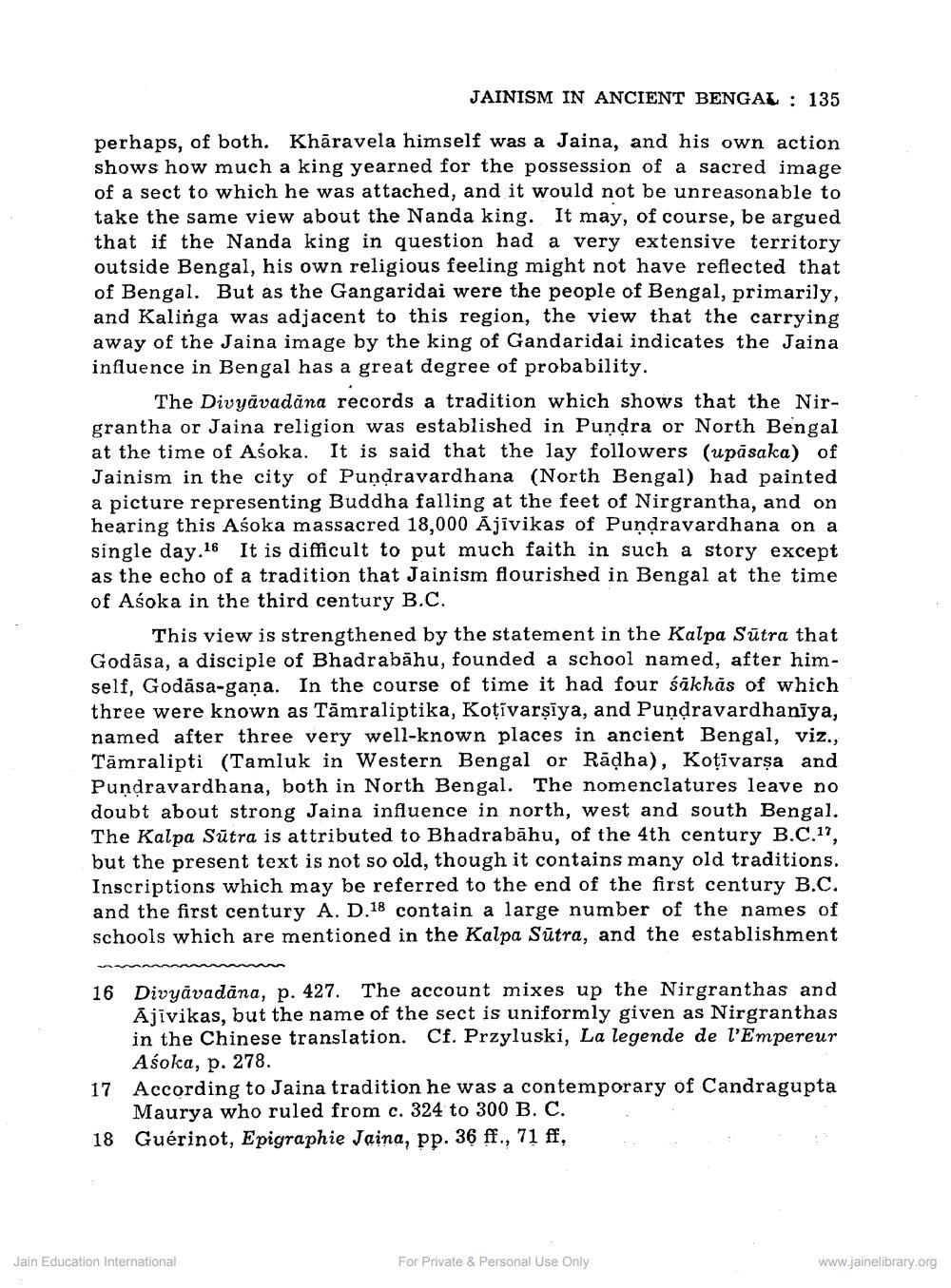Book Title: Jainaism in Ancient Bengal Author(s): R C Majumdar Publisher: Z_Mahavir_Jain_Vidyalay_Suvarna_Mahotsav_Granth_Part_1_012002.pdf and Mahavir_Jain_Vidyalay_Suvarna_ View full book textPage 6
________________ JAINISM IN ANCIENT BENGAL : 135 perhaps, of both. Khāravela himself was a Jaina, and his own action shows how much a king yearned for the possession of a sacred image of a sect to which he was attached, and it would not be unreasonable to take the same view about the Nanda king. It may, of course, be argued that if the Nanda king in question had a very extensive territory outside Bengal, his own religious feeling might not have reflected that of Bengal. But as the Gangaridai were the people of Bengal, primarily, and Kalinga was adjacent to this region, the view that the carrying away of the Jaina image by the king of Gandaridai indicates the Jaina influence in Bengal has a great degree of probability. The Divyāvadāna records a tradition which shows that the Nirgrantha or Jaina religion was established in Pundra or North Bengal at the time of Asoka. It is said that the lay followers (upāsaka) of Jainism in the city of Pundravardhana (North Bengal) had painted a picture representing Buddha falling at the feet of Nirgrantha, and on hearing this Asoka massacred 18,000 Ājivikas of Pundravardhana on a single day.16 It is difficult to put much faith in such a story except as the echo of a tradition that Jainism flourished in Bengal at the time of Asoka in the third century B.C. This view is strengthened by the statement in the Kalpa Sūtra that Godāsa, a disciple of Bhadrabāhu, founded a school named, after himself, Godāsa-gana. In the course of time it had four sākhas of which three were known as Tāmraliptika, Koțivarsiya, and Pundravardhanīya, named after three very well-known places in ancient Bengal, viz., Tāmralipti (Tamluk in Western Bengal or Rādha), Kotivarsa and Pundravardhana, both in North Bengal. The nomenclatures leave no doubt about strong Jaina influence in north, west and south Bengal. The Kalpa Sūtra is attributed to Bhadrabāhu, of the 4th century B.C.1", but the present text is not so old, though it contains many old traditions. Inscriptions which may be referred to the end of the first century B.C. and the first century A. D. 18 contain a large number of the names of schools which are mentioned in the Kalpa Sūtra, and the establishment 16 Divyävadāna, p. 427. The account mixes up the Nirgranthas and Ajivikas, but the name of the sect is uniformly given as Nirgranthas in the Chinese translation. Cf. Przyluski, La legende de l'Empereur Asoka, p. 278. 17 According to Jaina tradition he was a contemporary of Candragupta Maurya who ruled from c. 324 to 300 B. C. 18 Guérinot, Epigraphie Jaina, pp. 36 ff., 71 ff, Jain Education International For Private & Personal Use Only www.jainelibrary.orgPage Navigation
1 ... 4 5 6 7 8 9
